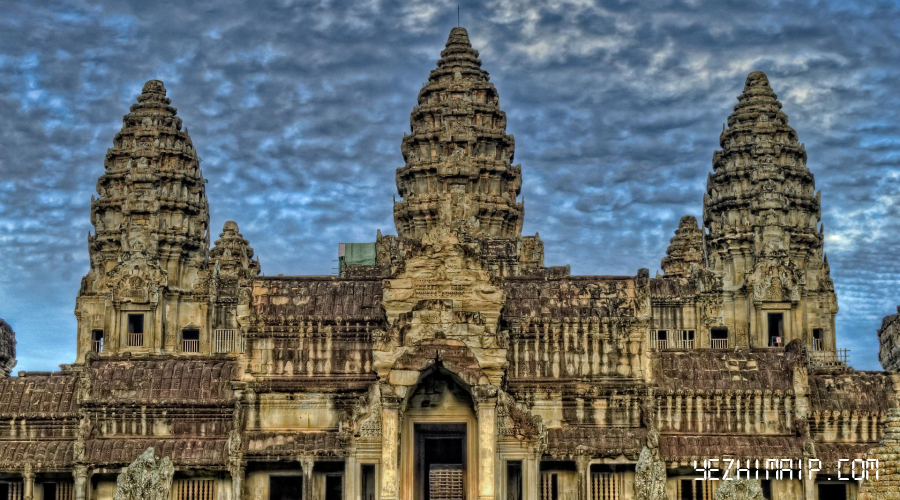
The land of sword floating sand
The country name Cambodia is derived from Sanskrit, meaning "the land of swords and floating sand", which hints at the founding myth of Cambodia. During the Eastern Han Dynasty, China called Cambodia "Ji Bu Shi" in the "Book of the Later Han Dynasty", and in the "Book of the Sui Dynasty" It was not called "Zhenla". It was called "Jimi" in the "Book of Tang", "Gan Bozhi" in the Yuan Dynasty, and "Gan Wuzhe" in the "History of the Ming Dynasty". After Wanli in the Ming Dynasty, it was finally transliterated as Cambodia. It can be seen that Cambodia, as an ancient civilization on the Indochina Peninsula with a history of 2,000 years, has had contacts with China since ancient times.
Perhaps the name "Jianfusha" implies murderous intent. Since becoming a country, Cambodia has experienced various civil wars and hardships. Especially during the three years of the Khmer Rouge's rule, it became the most bloody and violent man-made disaster in the 20th century. one. Until now, Cambodia remains one of the least developed countries in the world.
Since the implementation of constitutional reform in 2004, Cambodia has gradually stabilized its political situation and is increasingly becoming an emerging investment country in Southeast Asia. In 2019, the "Tribe Accelerator" led by the Singapore government established the first smart industrial logistics park in Thak Mao City, Phnom Penh. In terms of the intellectual property system, Cambodia has also made some progress, expressing to the world that the country's government is serious about promoting and promoting innovation and foreign investment.
In 2016, Cambodia joined the PCT system. In 2017, Cambodia signed an agreement with the European Patent Office, making Cambodia the first Asian country to recognize EPO-authorized patents and the fourth non-EPC member state to accept European patents. Cambodia has also launched the ASEAN Patent Examination Cooperation Program ASPEC with Brunei, Indonesia, Laos, Malaysia, Philippines, Singapore, Thailand and Vietnam since 2009, and member states can share search results and examination results; in addition, Cambodia and Singapore and Japan have signed relevant agreements respectively to expedite the examination of patent applications in the two countries.
Today we will learn about Cambodia’s patent system.
Introduction to Cambodia’s patent system
- For a specific introduction to Cambodian patent application, please refer to our website "Introduction to Cambodian Patent Application Process": Cambodian Patent Application Process - Page Number - Make Patenting Easy · Make patent application easier (yezhimaip.com)
- For Cambodian patent application fees, please refer to our website " Cambodian Patent Price Calculator ": Cambodian Invention Patent Application Package Paris Convention - Page Number - Make Patenting Easy · Make patent application easier (yezhimaip.com)
1. Cambodian patent application submission language:
Cambodian
2. Types of patent protection:
Inventions, utility models, designs
3. Ways for Chinese applicants to apply for patents in Cambodia:
The Paris Convention and the PCT international application enter the Cambodian national phase, the European authorized patent in Cambodia takes effect, and the Chinese authorized patent in Cambodia takes effect.
4. Review unit:
Department of Industrial PropertyMinistry of Industry, Science, Technology and Innovation, DIP/MISTI
5. Submit application:
paper submission
6. Review process:
After DIP/MISTI conducts preliminary formal examination of the patent application, it may require the applicant to provide any search reports or examination results related to the foreign application, foreign authorization text or examination opinions issued by the foreign patent office.
- Chinese invention patents can be registered directly in Cambodia and become effective.
- Chinese design patents can be recognized and registered in Cambodia at an accelerated pace.
Characteristics of Cambodian patents
1. Inventions related to pharmaceutical products cannot be patented in Cambodia under the exemptions Cambodia has obtained from WTO regulations.
2. IP rights holders have three avenues through which to defend their rights against alleged infringements: civil litigation, criminal prosecution and border control measures. Although not explicitly stipulated, the DIP can act as a mediator in infringement cases and handle them through administrative procedures.
3. From a practical point of view, it is more preferable to deal with small-scale intellectual property infringement cases through administrative channels mediated by the International Protection Agency. It is more efficient, faster and more cost-effective to deal with infringements.
4. Cambodia has not yet established a specialized intellectual property court. Intellectual property disputes are still a relatively new and complex issue in Cambodia. Cambodia’s intellectual property laws are insufficient, relatively unclear and vague. Therefore, there are obstacles to handling intellectual property disputes through courts. However, civil litigation is not a common way to enforce intellectual property rights in Cambodia.
Friendliness towards Chinese applicants:
★★
The value of patent rights:
★
Completeness of rights protection mechanism:
★
联系咨询
 | Get exact prices For the country / regionE-mail: mail@yezhimaip.com |

